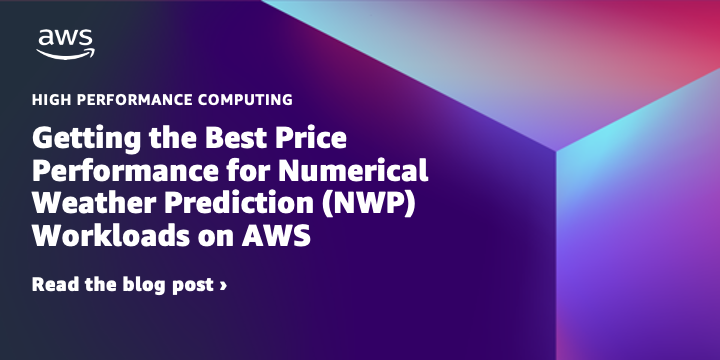AWS HPC Blog
Tag: HPC
DCV in 2022: a year in review
In this post we recap all the really significant feature released in DCV from 2022 that delighted our customers. Of course, we’re still not done, so expect more in 2023.
AWS ParallelCluster 3.3.0 now supports On-Demand Capacity Reservations
With #AWS #ParallelCluster 3.3, you can now easily take advantage of #EC2 On-Demand Capacity Reservations to help ensure your jobs have the capacity they need when they need it. This post describes the new feature and how you can benefit from it.
Building deep learning models for geoscience using MATLAB and NVIDIA GPUs on Amazon EC2 (Part 2 of 2)
This is the second of a two-part post.Part 1 discussed the workflow for developing AI models using MATLAB for seismic interpretation. Today, we will discuss the various compute resources leveraged from AWS and NVIDIA for developing the models.
Building deep learning models for geoscience using MATLAB and NVIDIA GPUs on Amazon EC2 (Part 1 of 2)
In this blog post, we discuss how geoscientists can use shallow RNN-based algorithms with MATLAB to automatically recognize distinct geologic features in seismic images. We discuss the workflow for developing the AI models using MATLAB for seismic interpretation. In a second post will introduce the various compute resources leveraged from AWS and NVIDIA for developing the models.
Second generation EFA: improving HPC and ML application performance in the cloud
Since launch, EFA has seen continuous improvements in performance. In this post, we talk about our 2nd generation of EFA, which takes another step in improving Machine Learning and High Performance Computing in the Cloud.
Launch self-supervised training jobs in the cloud with AWS ParallelCluster
In this post we describe the process to launch large, self-supervised training jobs using AWS ParallelCluster and Facebook’s Vision Self-Supervised Learning (VISSL) library.
Bridging research and HPC to tackle grand challenges
Today we announced the AWS Impact Computing Project at the Harvard Data Science Initiative (HDSI) to identify potential solutions that can improve the lives of humans, other species, and natural ecosystems. Deb Goldfarb describes its goals and our joint vision.
Support for Instance Allocation Flexibility in AWS ParallelCluster 3.3
AWS ParallelCluster 3.3.0 now lets you define a list of Amazon EC2 instance types for resourcing a compute queue. This gives you more flexibility to optimize the cost and total time to solution of your HPC jobs, especially when capacity is limited or you’re using Spot Instances.
BioContainers are now available in Amazon ECR Public Gallery
Today we are excited to announce that all 9000+ applications provided by the BioContainers community are available within ECR Public Gallery! You don’t need an AWS account to access these images, but having one allows many more pulls to the internet, and unmetered usage within AWS. If you perform any sort of bioinformatics analysis on AWS, you should check it out!
Getting the Best Price Performance for Numerical Weather Prediction Workloads on AWS
In this post, we will provide an overview of Numerical Weather Prediction (NWP) workloads, and the AWS HPC-optimized services for it. We’ll test three popular NWP codes: WRF, MPAS, and FV3GFS.









